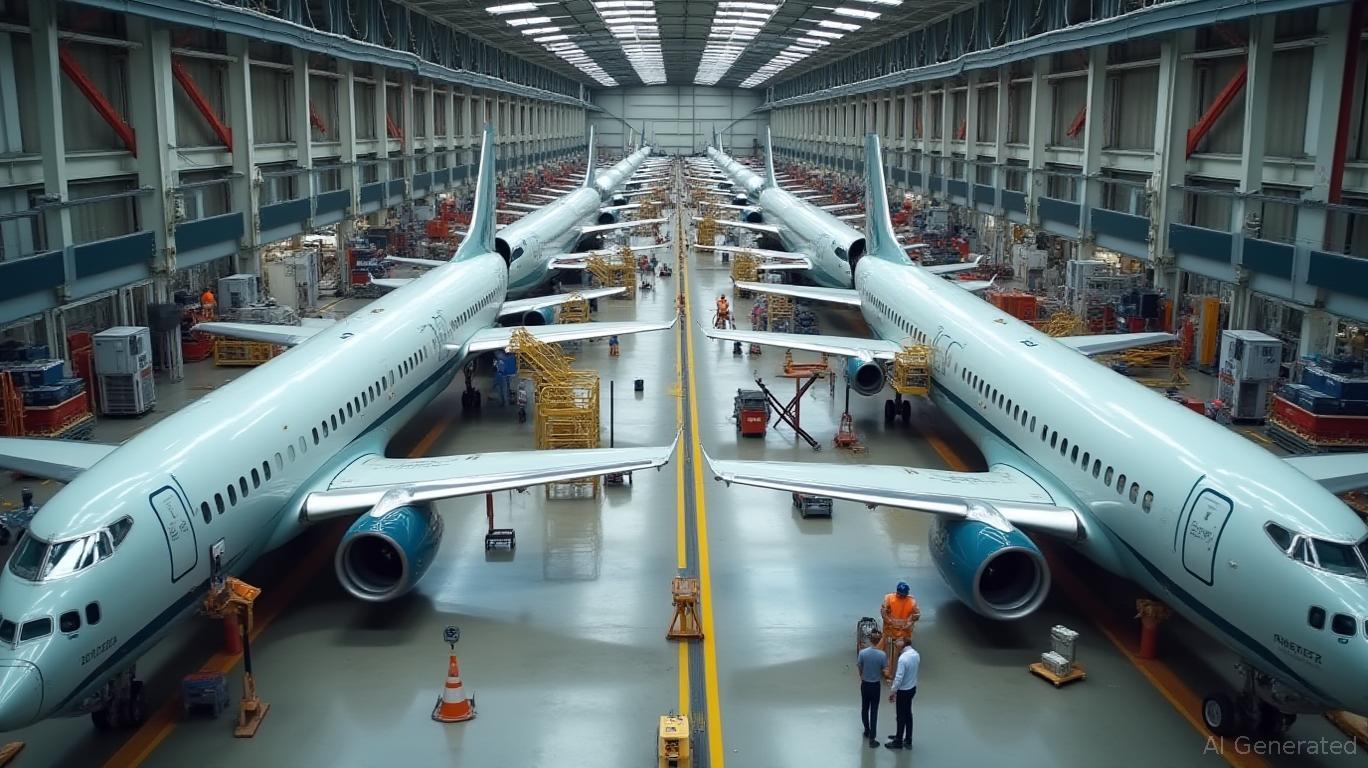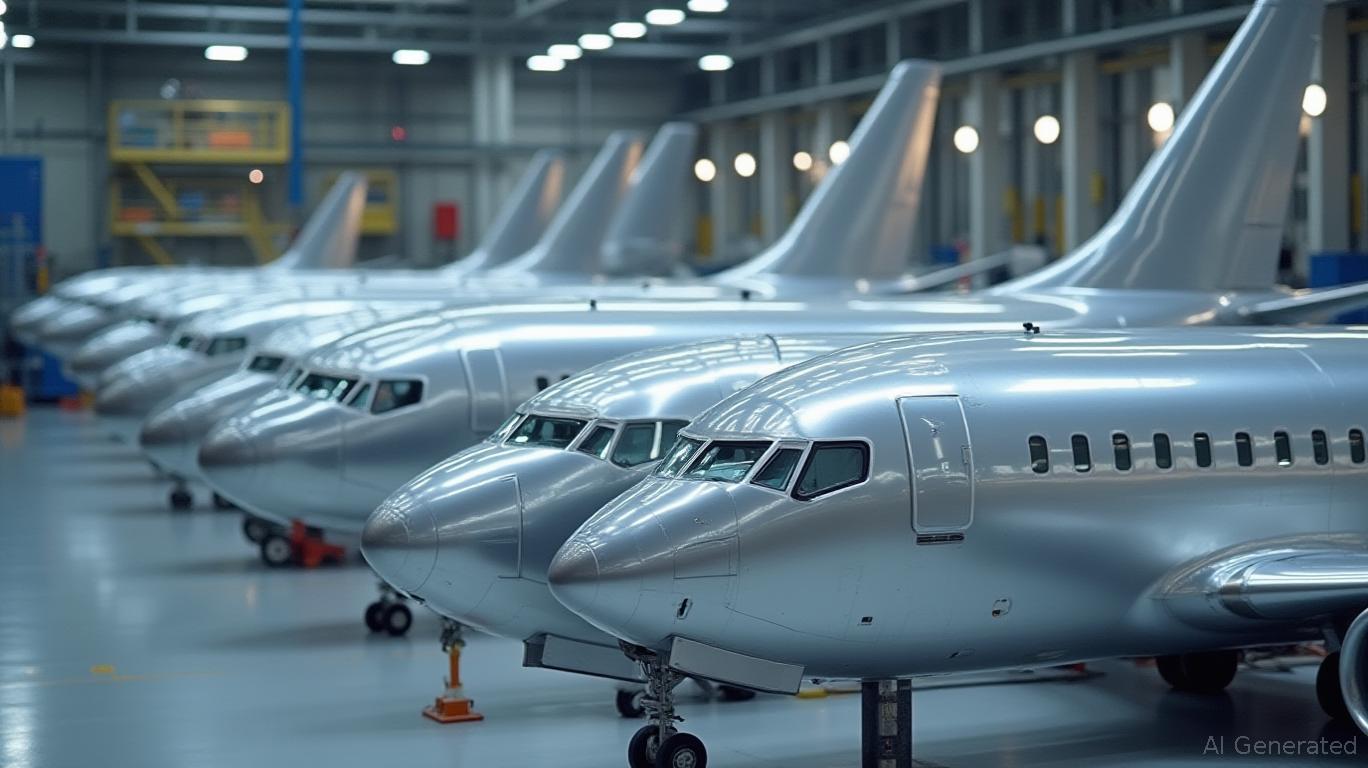Boeing Faces Crosswinds: Can 'Defaulting' on China Deliveries Stabilize its Future?
The escalating U.S.-China tariff war has thrust Boeing into a high-stakes game of geopolitical chess. President Donald Trump’s April 23 statement—“We should ‘default’ on China deliveries if they won’t play ball”—captures the urgency. With Chinese airlines refusing to accept Boeing aircraft amid retaliatory tariffs, the company now faces a pivotal choice: pivot away from its second-largest market or risk prolonged financial strain.

The Tariff Standoff and Boeing’s Immediate Response
China’s abrupt halt to Boeing deliveries in early 2025 stems from a 125% retaliatory tariff on U.S. aircraft, a direct response to U.S. tariffs of 145% on Chinese goods. Boeing CEO Kelly Ortberg confirmed to investors that two 737 MAX jets had already been returned to the U.S., with a third in transit, and that 50 planes originally slated for China in 2025 would need alternative buyers. Ortberg emphasized, “We’re not waiting indefinitely. There are plenty of buyers for these planes.”
The company has already begun re-marketing 41 completed aircraft, while delaying production of nine others. This pivot underscores Boeing’s resolve to avoid inventory buildup, even as it risks long-term market exclusion in China—a country that accounted for 20% of its 2024 deliveries.
Financial Resilience Amid Turbulence
Boeing’s first-quarter 2025 results reveal a mixed picture. Revenue rose 18% year-over-year to $19.5 billion, driven by stronger production after a 2024 slump caused by a 30,000-worker strike. The net loss narrowed to $123 million, down from $343 million in Q1 2024, signaling progress. However, the company’s ability to redirect aircraft is critical to maintaining its $4–5 billion annual cash usage target.
Geopolitical Risks and Opportunities
Trump’s tough rhetoric masks a complex reality. While he claims tariffs will “come down substantially,” Chinese Foreign Ministry spokesperson Guo Jiakun has accused the U.S. of “economic bullying.” This standoff threatens Boeing’s long-term growth: losing China’s market could open the door to Airbus, which maintains production hubs in multiple countries and has already secured $30 billion in Chinese orders since 2023.
Yet Boeing’s agility shines in its supply chain resilience. Despite 10% tariffs on Japanese and Italian suppliers, the company reaffirmed its 2025 production targets: 38 737 MAXs per month and 7 787 Dreamliners monthly. Additionally, the $10.6 billion sale of its digital aviation solutions business to Thoma Bravo bolsters liquidity, easing pressure to finance stranded assets.
The Bottom Line: Navigating the Crosswinds
Boeing’s path forward hinges on three factors:
1. Market Diversification: Success in re-selling 50+ planes to other buyers will stabilize cash flow.
2. Production Discipline: Maintaining production targets without overcommitting to China is key to avoiding losses.
3. Geopolitical Resolution: A U.S.-China trade deal could reignite Chinese demand, but Boeing must prepare for prolonged friction.
Investors should note Boeing’s 6% stock surge in early April and its improved margins—1% core operating margin in Q1 2025, up from -2.3% in 2024—as signs of operational healing. However, risks remain: prolonged tariffs could force Boeing to write down unsold inventory, while supply chain disruptions from global tariffs could eat into margins.
Conclusion: A Calculated Pivot
Boeing’s decision to “default” on China deliveries—by halting production for non-paying customers and re-marketing aircraft—is a pragmatic step. With $19.5 billion in Q1 revenue and a narrowed loss, the company has the financial firepower to navigate this pivot. Its focus on production discipline and liquidity—through asset sales and global sales efforts—positions it to weather the storm.
Yet investors must weigh two scenarios:
- Best Case: A U.S.-China trade deal reopens Chinese demand, allowing Boeing to capitalize on pent-up orders.
- Worst Case: China turns to Airbus permanently, forcing Boeing to permanently reduce China’s share of production.
For now, Boeing’s actions—reducing exposure to China’s volatility while expanding alternatives—align with shareholder interests. The stock’s April surge suggests markets share this view. But as Ortberg himself noted, “The recovery won’t wait,” and Boeing must execute flawlessly to avoid becoming collateral damage in a larger trade war.
Boeing’s path forward is fraught with risk, but its strategic moves so far suggest it’s flying closer to the sun—and safety—than many expect.


_442a2dcc1749832873286.jpeg)
_e68fac6d1749831664430.jpeg)






